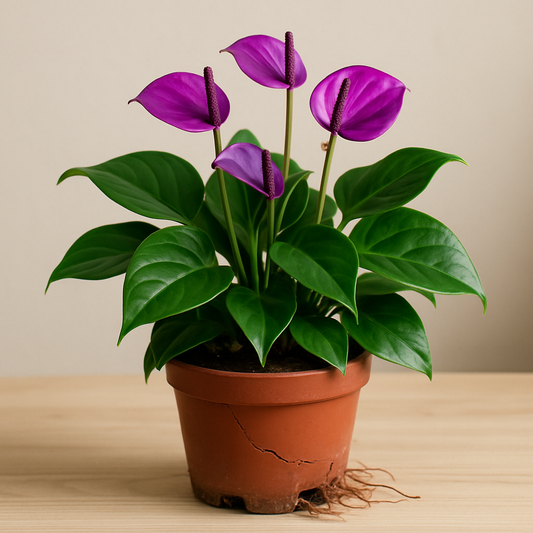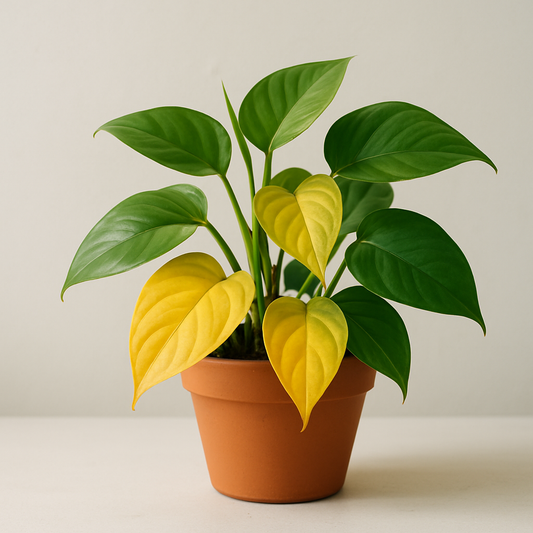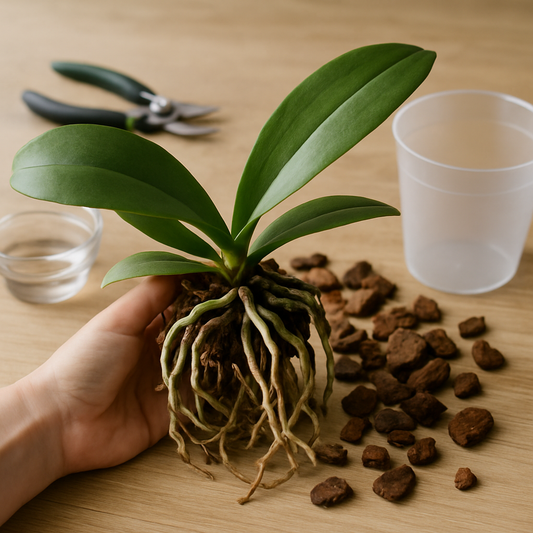Calla Lilies, with their graceful charm and vibrant colors, have long been a favorite among gardeners and houseplant enthusiasts. Whether you're looking to add a pop of color to your indoor space or enhance your garden outdoors, these versatile blooms can provide the aesthetic lift you seek. However, ensuring these stunning flowers thrive requires a certain understanding of their needs. In this comprehensive guide, we'll walk you through the essentials of Calla Lily care—from watering to propagation—helping you cultivate a flourishing addition to your plant collection.
Watering Your Calla Lily
Watering is crucial for the health of your Calla Lily. During the growing season in spring and summer, ensure the soil remains consistently moist but not waterlogged. This usually means watering once a week, but you should adjust according to the climate and the size of the plant. A good rule of thumb is to water deeply, allowing the top two inches of soil to dry out before re-watering. When the plant is in its dormant phase in the fall and winter, reduce watering to once every few weeks.
Soil Requirements for Calla Lily
Calla Lilies prefer rich, well-draining soil. A recommended mixture consists of equal parts peat moss, bark, and perlite or sand. This combination ensures good drainage while retaining enough moisture. Consider enhancing the soil with organic matter before planting to provide nutrients that support vibrant blooms.
Light Requirements for Calla Lily
To get your Calla Lilies blooming spectacularly, positioning them in bright, indirect light is key. They can tolerate partial shade, making them suitable for locations with soft morning light or filtered sunlight through a sheer curtain. Attempting to grow them in too much direct sunlight may scorch the leaves, so monitoring their location is vital.
Temperature and Humidity Considerations
Calla Lilies thrive in warm temperatures ranging between 60-75°F (15-24°C). In colder climates, consider bringing them indoors or planning for adequate insulation. These plants also prefer high humidity levels, so consider using a pebble tray or humidifier in drier environments.
Feeding and Fertilizing Your Calla Lily
Feed your Calla Lilies with a balanced liquid fertilizer every 4-6 weeks during the active growing season. Dilute the fertilizer to half strength to avoid over-fertilization, which can lead to flower and leaf burn. Refrain from fertilizing during the dormant period.
Pruning and Maintenance Tips
Regular pruning will keep your Calla Lilies healthy and promote blooming. Trim off spent blooms and dead foliage to encourage new growth. Always use sterilized tools to prevent the spread of disease, and monitor regularly for any signs of stress.
Common Issues and Solutions
Yellowing leaves, poor flowering, or wilting can indicate problems such as over-watering, under-watering, or pest infestations. Ensure proper watering techniques and inspect regularly for pests, addressing any issues immediately.
Common Pests and Management
Calla Lilies can attract aphids, spider mites, and snails. Combat these pests naturally using insecticidal soap or neem oil, and encourage beneficial insects like ladybugs in outdoor settings. Regular inspection will catch infestations early.
Propagation Tips for Calla Lily
Propagating Calla Lilies is typically done through division. In late winter, gently separate the rhizomes when repotting, ensuring each piece has at least one healthy shoot. Plant them in fresh, well-drained soil and maintain consistent moisture.
Overwintering Your Calla Lily
In colder climates, overwinter your Calla Lilies by lifting the rhizomes after the first frost. Clean and dry them before storing in a cool, dry place in peat or sand. Replant in the spring to rejuvenate your garden.
Transitioning Between Indoor and Outdoor Care
To successfully transition Calla Lilies between indoor and outdoor environments, gradually acclimate them by increasing exposure time to new conditions. Start by placing them in shaded areas outdoors and slowly introduce them to brighter light.
Indoor Care for Calla Lily
When grown indoors, place your Calla Lily near east-facing windows where they can bask in morning light. Enhance humidity and maintain regular watering patterns, adjusting frequency in response to indoor heating, which can dry out plants.
Outdoor Care for Calla Lily
For outdoor Calla Lilies, select garden spots with partial shade and rich soil. Mulch around plants to retain moisture and protect roots. Consistent observations of weather conditions will prevent extreme scenarios that could harm the plant.
How to Grow Calla Lily From Seed
Growing Calla Lilies from seed requires patience. Sow seeds in a seed tray, lightly covering with vermiculite, and keep moist and warm until germination, which may take several weeks. Once seedlings appear, transplant to individual pots before moving outdoors.
Special Care Tips for Calla Lily
Consider adjusting care techniques based on specific challenges to your environment, such as high winds or fluctuating temperatures. Building simple windbreaks or moving pots can manage these conditions effectively.
Design Ideas with Calla Lily
Calla Lilies are perfect for statement pieces in your living space. Combine them with ferns or hostas for a striking textural contrast in shaded gardens. For a more vivid display, mix with bright-colored annuals like begonias or impatiens. Their elegant nature makes them versatile in both minimalist and traditional decor styles. Learn more about the Calla Lily and bring its charm to your space today!




